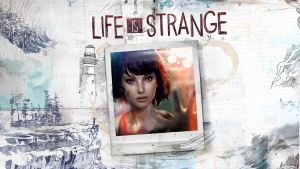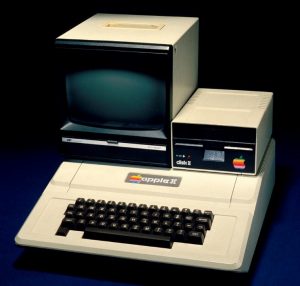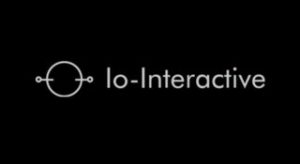- What do you see as the Positives and Negatives around Copyright?
&
- Is it possible to make anything new?
1
Personally I am very biased when it comes to Copyright, in favour of the positives. However, I will try to explain and justify both sides. First however, I will define copyright. Through court decisions and specific language, within the UK Copyright Act of 1988 (Archives, 1988), the scope of copyright has been limited to particular expression of an idea, not the idea that underlies that expression. In no form does copyright protection for an original work of authorship extend to any idea, procedure, process, system, method of operation or anything of the sort, embodied in such work. Copyright doesn’t preclude others from using the ideas or information revealed by the author’s work. It pertains to the literary, musical, graphic or artistic from in which the author expressed intellectual concepts. This means the physical outcome is the only part of which is under copyright protection.
Now I will list off what I agree to be the positives and negatives of Copyright:
Advantages
- Rights to Produce/Reproduce
Copyright gives the creator of a piece of intellectual property (including literary, musical, dramatic, or artistic work; not ideas) the sole right to produce and reproduce their work.
These include the right to authorise others to produce or reproduce your work as well as the right to broadcast your work.
Copyright prevents your work from being stolen or misused by others.
Copyright allows the holder of the copyright to object to uses of their work that they find morally objectionable.
Disadvantages
Copyrights key advantage can also be it’s downfall. Copyright doesn’t allow you to openly permit others to use your work or to distribute it, even if they are not doing it for profit.
- Authorship isn’t Ownership
You must own the copyright to be able to exercise the rights that it grants, and just being the creator of the work does not always guarantee ownership. In some cases the owner is actually the person who commissioned the work, or the company for whom the work was produced.
Copyright protection doesn’t last forever. The duration depends on several factors. Generally, copyright expires at the end of the period of 70 years from the end of the calendar year to which the creator dies, or which the work was made.
2
I believe we can be very pedantic with the term “new”, as we can create something new all the time but it can be influenced by other media or ideas. For example, everybody tends to believe that Star Wars paved the way for modern Sci-Fi, however be it not for the likes of Stanley Kubrick’s ‘2001: A Space Odyssey’ we wouldn’t have Star Wars either. Then to the argument that the story was nothing we had seen before, well actually, George Lucas was inspired by Akira Kurosawa’s ‘The Hidden Fortress’ (Barber, 2016).
Although, in a world of sequels and prequels, we can occasionally get something totally original like the beloved Netflix show, Stranger Things or Dontnod Entertainment/Square Enix game Life is Strange.
 (Strohman, 2016)
(Strohman, 2016)
References
Archives, N. (1988). Copyright, Designs and Patents Act 1988. Retrieved from legislation: https://www.legislation.gov.uk/ukpga/1988/48/contents
Barber, N. (2016). The Film Star Wars Stole From. BBC. Retrieved from http://www.bbc.com/culture/story/20160104-the-film-star-wars-stole-from
Bomb, G. (n.d.). Retrieved from https://www.giantbomb.com/io-interactive/3010-3562/
Carroll, J. M. (n.d.). The Encyclopedia of Human-Computer Interaction, 2nd Ed. Retrieved from Interaction Design Foundation: https://www.interaction-design.org/literature/book/the-encyclopedia-of-human-computer-interaction-2nd-ed/human-computer-interaction-brief-intro
CBSNews. (2013, February 9). Preview: The Last of US. Retrieved from CBS News: https://www.cbsnews.com/news/preview-the-last-of-us/
CItyofRapture246. (2015). All Console Commands (Fallout 4). Retrieved from http://steamcommunity.com/sharedfiles/filedetails/?id=564770571
Clore, G. L. (2013). Psychological Construction in the OCC Model of Emotion.
D, B. (2017, June 20). Hitman Episode 1: ICA FAcility Free Download Available on PS4, PC, Xbox One. Retrieved from One Angry Gamer: https://www.oneangrygamer.net/2017/06/hitman-episode-1-ica-facility-free-download-available-on-ps4-pc-xbox-one/33425/
Ding, Y. Z. (2003). The Designing and Development of Game. People’s Traffic Press.
FrictionalGames. (2017). In the Games of Madness. Retrieved from http://frictionalgames.blogspot.co.uk/
Gohanssj2. (2013, Jun 27). Antics of the Whiterun Guards. Retrieved from Imgur: https://imgur.com/gallery/Ev9gF
Hudlicka, E. (2009). Foundations for Modelling Emotions in Game Characters: MOdelling EMotion Effects on Cognition.
Indie Game The Movie (2012). [Motion Picture]. Retrieved from https://vimeo.com/ondemand/indiegamethemovie/25268139
Lebowitz, J. (2011). Interactive Storytelling for Video Games.
McMullin, K. (2014, April 24). Passive vs. Active Participants. Retrieved from Collegewise: http://wiselikeus.com/collegewise/2014/04/passive-vs-active-participants.html
Norman, D. (1988). The Design of Everyday Things.
Playstation. (n.d.). The Last of Us Remastered. Retrieved from Playstation: https://www.playstation.com/en-gb/games/the-last-of-us-remastered-ps4/
Smithsonian. (n.d.). Apple 2 Personal Computer. Retrieved from National Museum of American History: http://americanhistory.si.edu/collections/search/object/nmah_334638
Strohman, D. (2016, October 20). One Year Later: “Life is Strange”. Retrieved from The Young Folks: https://www.theyoungfolks.com/review/86175/one-year-later-life-is-strange/







